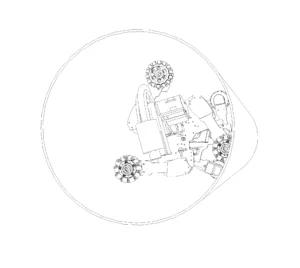Strategies for Preventing Internal Pipeline Corrosion in the Energy Industry

Protecting Pipelines from Corrosion
Internal pipeline corrosion poses a significant challenge to the energy industry. It can be caused by the presence of water, carbon dioxide, hydrogen sulfide, and other corrosive substances. Without preventative measures, pipeline corrosion can lead to potential safety hazards, environmental damage, and costly repairs. Several advanced techniques and materials have been developed to stop this issue, ensuring the integrity and longevity of pipelines. This blog explores the latest methods and technologies used to address corrosion in different types of pipelines and systems within the industry.
Methods of Prevention of Pipe Corrosion
Corrosion control in oil and gas pipelines is critical to maintain operational efficiency and safety. Integrated Global Services (IGS) has recently launched a Metalspray® Pipe ID cladding rover system, a no-man entry solution designed for pipeline corrosion protection. This method involves applying a protective alloy cladding layer inside the pipe, which significantly enhances its resistance to corrosive elements typically found in oil and gas environments.
Key Benefits:
Enhanced Durability: The metal cladding provides a strong barrier against corrosive agents, extending the pipeline’s lifespan.
Cost-Effective Maintenance: Reduces the frequency and cost of repairs and replacements.
Improved Safety: Minimizes the risk of leaks and failures, ensuring safer operations.
Find out more about the Metalspray® Pipe ID Rover, here.
Finger Slug Catcher Corrosion
Slug catchers are essential components in gas processing facilities, designed to manage the flow of gas and liquids. However, this process poses significant corrosion risks, particularly from H2S and CO2.
Slug Catcher Corrosion Complications:
- Leaks
- Loss of containment
- Costly unplanned shutdowns
Replacing corroded slug catchers poses a significant logistical and financial challenge. Long lead times for replacement assets make finding a cost-effective and timely solution a high priority for upstream producers.
A Proven Solution: Field-applied Alloy Upgrade
IGS uses its field-applied no-man-entry Metalspray® technology to navigate finger slug catchers, performing targeted alloy upgrades on corrosion-prone areas. The system efficiently removes corrosion products and inspects surfaces to ensure optimal
Key Advantages:
Corrosion Resistance: Field-applied cladding offers superior protection against harsh environmental conditions.
Operational Reliability: Maintains the integrity of slug catchers, ensuring consistent performance.
Learn more about protecting finger slug catchers, here.
Flare Line Corrosion Protection
Flare lines are critical for safely burning off excess gas, however, they are highly susceptible to corrosion induced by H2S, CO2, and other corrosive agents present in wet gas systems. Effective solutions to mitigate flare line corrosion are available, including field alloy upgrades that enhance the durability and performance of flare system piping.
Key Benefits of Metalspray® Alloy Upgrade:
Operational Efficiency: By reducing the frequency of maintenance and the risk of unplanned shutdowns, the Metalspray® solution helps maintain continuous, efficient operations.
Increased Lifespan: Alloy upgrades significantly extend the operational life of flare line piping.
Safety Improvement: Reduces the risk of leaks and failures in high-temperature environments.
Cost Savings: Extending the lifespan of existing infrastructure results in substantial cost savings over time, minimizing the need for expensive replacements and repairs.
Explore the solutions to flare system corrosion, here.
Wet Gas Pipeline Corrosion
Wet gas systems are particularly susceptible to carbon dioxide corrosion in oil and gas production due to the presence of water and acidic gases like H2S and CO2. Effective management of wet gas corrosion is crucial for maintaining pipeline integrity and safety. IGS provides tailored solutions to address wet CO2 corrosion, including:
- Specialized Field-applied Cladding: Protects against CO2 pipeline corrosion.
- Preventive Maintenance: Regular inspections and maintenance to identify and mitigate corrosion early.
Learn more about wet gas or sweet corrosion, here.
Conclusion
Preventing pipeline corrosion in the energy industry requires a combination of advanced materials, innovative techniques, and diligent maintenance practices. IGS offers comprehensive solutions tailored to various types of pipelines and corrosion challenges, ensuring enhanced durability, safety, and cost-effectiveness.
Speak to an internal pipeline corrosion advisor today.
More corrosion and erosion management articles from Integrated Global Services:
CO₂ Corrosion Prevention and Control in Oil and Gas Production
How to Prevent Microbially Influenced Corrosion (MIC) with On-Site Alloy Upgrade
Why is High Emissivity Coating Durability Important in Fired Heaters?
Flue Gas Dew Point Corrosion Mitigation: Alloy Upgrading Techniques
Mitigating Metal Dusting Corrosion in Ammonia and Methanol Reformers
Combating Flow Accelerated Corrosion in Power Plants with IGS HVTS Technology
Why an Alloy Upgrade is the Best Solution to Crude Unit Overhead Corrosion Control
Protecting Hydropower Turbines from Corrosion with HVTS Coatings
Protecting Offshore Wind Turbines – Splash Zone Corrosion
The Critical Role of High Emissivity Coatings in Space Exploration
Organic Coatings in Pressure Vessels: Internal Coating Failure Analysis
How to Stop Corrosion on Your Refinery Distillation Column
Causes of Boiler Corrosion and Benefits of Boiler Tube Coating
5 Common Causes of Refractory Failure and How to Fix Them
Boiler Tube Leaks Prevented with Proactive Maintenance
Understanding Oil & Gas CO2 and NOx Emissions, and the Science Behind Reducing Them
A Guide to Amine Stress Corrosion Cracking in Oil & Gas Processing
